Need to keep your car healthy while it’s off the road? Check out our car battery trickle charger guide to make sure yours doesn’t run flat.
If your car doesn’t see regular use – perhaps because it’s a project build, or part of a collection – then you’ll want to do something to prevent its battery from dying over time.
Usually, if a car is in regular use then this job falls under the remit of the alternator, but an alternator can only maintain batteries which are full, or nearly full of charge. So, if your car’s battery is in poor health (or is at risk of declining due to spending a long time off the road), then you may wish to invest in a battery trickle charger.
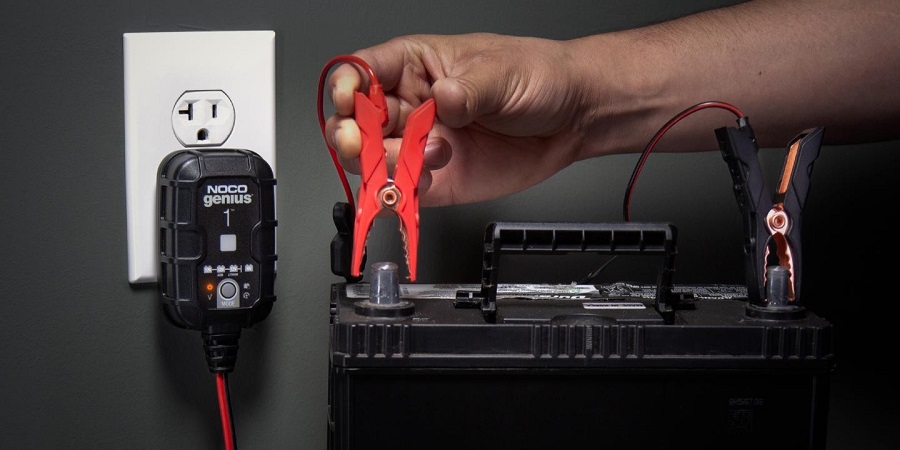
How do battery trickle chargers work?
Essentially, trickle chargers act as a steady top-up for batteries which aren’t seeing much action. The key to their utility is the use of a battery regulator, which ensures that that the charger tops the battery up at the same rate that the battery naturally discharges.
This maintenance of parity in charge levels is important, as charging a battery too quickly – or overcharging it beyond capacity – can cause irreversible damage to the battery. As such, battery trickle chargers tend not to use more than one or two amps of electricity at any given time, meaning that it can take up to around 48 hours to bring a battery up to full charge from zero.
That shouldn’t cause you any concern though, as while it might seem hazardous to leave electrical equipment running by itself for that long, that’s exactly what manufacturers design these battery trickle chargers to do. In fact, you can leave some higher end examples for weeks at a time – but always check the instruction manual to be sure. These days, you can get trickle chargers which plug into the mains, or source their energy from solar panels. Whichever, the basic premise is still the same.
Oh, and one final important factor to note. During the charging process, battery trickle chargers can emit a sort of hydrogen-based gas; a phenomenon known as ‘off-gassing’. This gas is harmful to breath in, and could even lead to fires if ignited – so wherever you charge up your car, you’ll want to ensure that it’s well-ventilated.
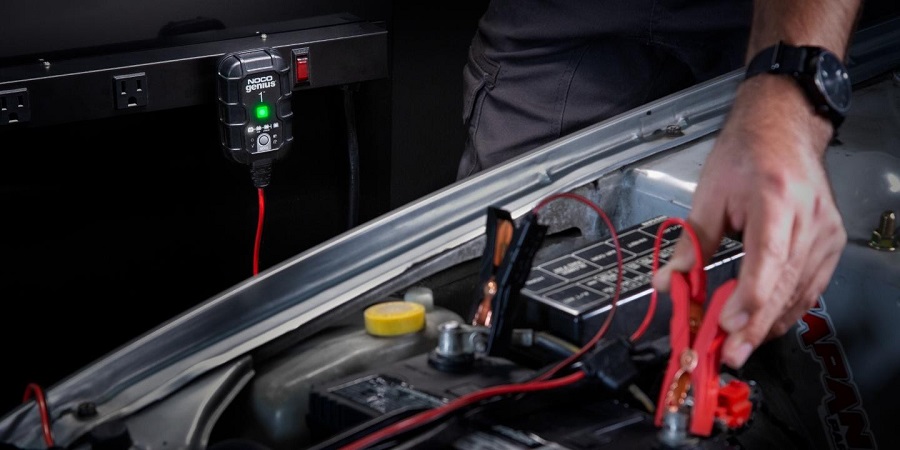
How to Use a Battery Trickle Charger
Once you’ve found a nice well-ventilated (and hopefully dry) spot to begin trickle charging your car’s battery, you’ll first want to remove the car’s key from the ignition and then set the appropriate voltage and amperage on the charger. Consult instruction manuals if you’re unsure about the exact settings to use.
Next, identify an area within the car’s engine bay that you can use as a ground to connect the charger’s negative (black) alligator clip to. This can be any sort of bare metal located away from the fuel system, so perhaps part of the car’s frame or a clean bolt. In fact, some vehicles even have designated grounding points – so see if your car’s got one too when making this decision. The one thing you must not do, however, is simply attach the negative polarity clip to the negative battery terminal as this can cause an explosion or fire. Once you’ve got the ground sorted, attach the red positive clip to the positive battery terminal.
Speaking of which, if you’ve got the battery trickle chargers clips in place, it’s now time to plug it into a power source and turn it on. Hopefully your charger has some sort of readout which can relay amp meter readings to you. If you’re seeing a low reading, then that’s an indication that you actually don’t need to worry about charging the battery for now – it’s still got a healthy charge in it. Either that, or you need to reposition your ground to another location for a more truthful reading.
Otherwise, it should take a few minutes for the battery trickle charger to start working its magic, but if you’re not seeing any change on the readout even after that point, your dead battery might have reached the point of no return.
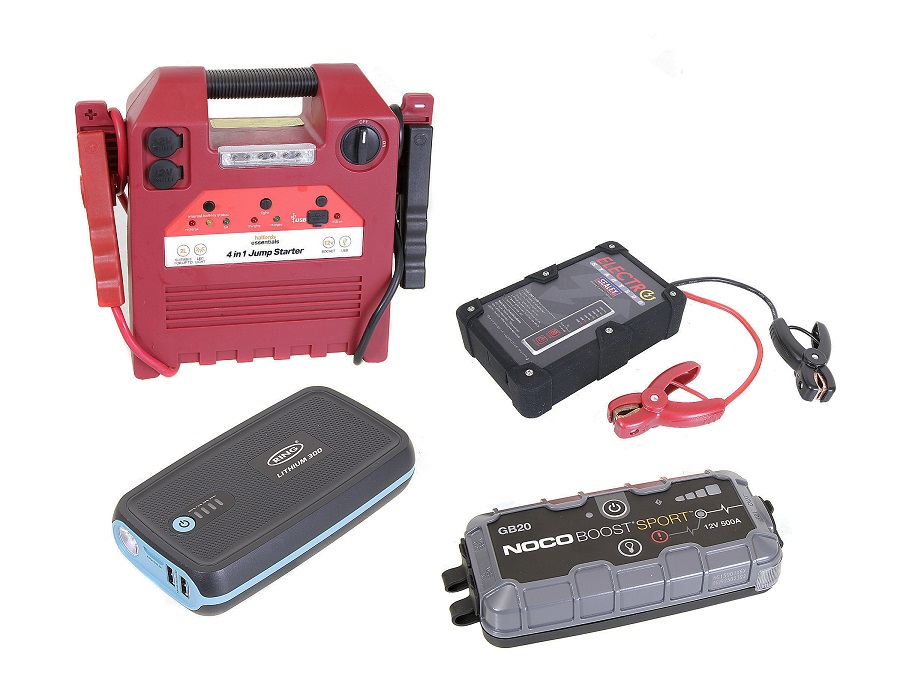
Why not just use a jump starter when the battery is flat?
Well, whereas a booster pack is a useful tool for getting quick results, a battery trickle charger can be preventative as well as reactive. Yes, you can use a trickle charger to recharge an already-depleted battery, but you can also use one in advance of that becoming an issue. For example, if you know you’ll be storing your prized track car away in winter, a trickle charger can help maintain its existing battery health.
So, why not save yourself the future hassle of getting the car started again from zero, or possibly even having to buy a new battery? If your lifestyle involves storing cars away from sight for extended periods of time, a battery trickle charger is surely a no-brainer investment to make.
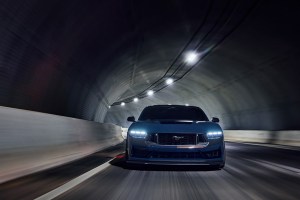
How to Preserve a battery’s health
Of course, not everyone has the capacity to make use of a battery trickle charger. For instance, if your car is left on the street, you aren’t going to be able to hook it up to a power source that easily – and even if you can, you don’t want to leave wires strewn across the sidewalk.
In that scenario, it’d be a little odd to store a car there for long periods of time, knowing it won’t be used. But if you find yourself in a scenario where that has to be the case, there are a couple of things you can do to preserve the battery’s health as much as possible to avoid the need of a trickle charger.
The most important thing is not to fall into the trap of simply switching the car on for a bit every so often, thinking that it’ll do it good. In reality, short bursts of engine idling can actually sap your engine’s battery even more than leaving it untouched.
Secondly, if you own two or more vehicles (which might be why you’ve parked this one up for the time being), consider involving the car as part of a semi-regular vehicle rotation. Even small trips every now and then to places beyond walking distance will do the car and its battery some good.
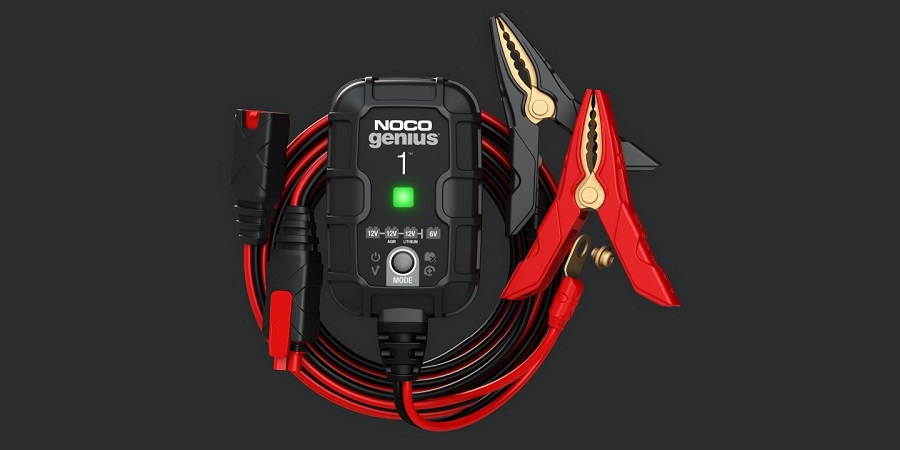
Recommended Brands
When it comes to battery tech, NOCO are a bit of a powerhouse brand, so it should come as no surprise that they offer a selection of battery trickle chargers too. We’ve opted to highlight the Genius 1 as it represents excellent value for money (MSRP: $29.99) and provides steady 1 amp charging for both AGM and lithium-ion batteries.
The environmentally conscious amongst you may prefer the ProPlus solar trickle charger instead. This relies on simple light rays to produce an electric charge, but depending on where you store your car, that may not be the most reliable source of power.
Alternatively, well-known appliance brand Black + Decker also produce their own car battery trickle charger, whereas car maintenance novices might like the peace of mind which comes with Deltran’s reverse polarity protection. Essentially, this ensures that its Junior Battery Tender will not operate unless you hook up the terminals correctly.
Looking for something a bit different? Check out our rundown of some of the best regular car battery chargers here! Read our guide on how to charge any car’s battery here.





